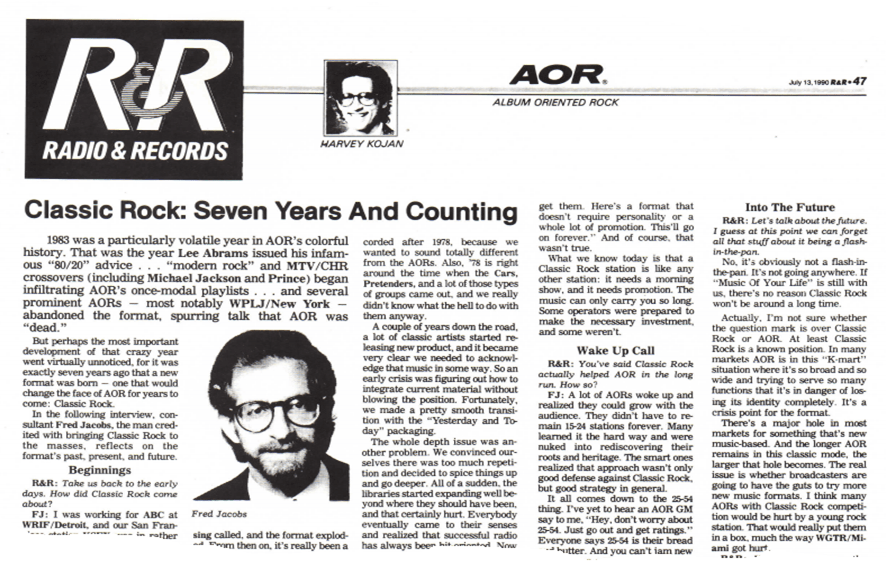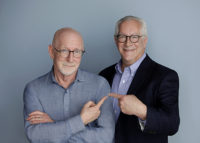
Thanks for reading yesterday’s post about the growth, the impact, and the maturation of TikTok. I was pleased to learn that for a number of you, it got those creative juices flowing.
Innovation needs to be at the core of what we do as an industry. As so many companies have learned—the hard way—standing pat is a recipe for disaster in a world that’s constantly in search of “the next big thing.” That’s not just been a theme at CES since we began attending this amazing show, it’s the oxygen that keeps this event front and center even as exhibitors come and go. The “secret sauce” is always the same—how those new ideas provide resilience and sustainability. In fact, the phrase “innovate or die”—harsh as it may be—is a motivating force for so many in the tech/media ecosphere.
Yesterday’s post showcased the rise and impact of TikTok. The company has been able to stay ahead of efforts to shut it down in the U.S., while growing its influence among content creators and marketers. One of the offshoots of the post was that it reminded some of you about the short-lived Quibi, a once promising startup that launched right when the COVID virus spurred a global pandemic. In case you’ve forgotten, Quibi was the offspring of brilliant, creative and well-heeled parents—notably Jeffrey Katzenberg (producer of monster hits like The Lion King and Shrek) along with Meg Whitman of Hewlett Packard fame. And unlike so many burgeoning new media companies, Quibi was excessively well-funded—to the tune of $1.75 billion.
According to a TechCrunch story that came out during this time called Quibi an “attempt at a mobile-only Netflix.” The content? Six to 10-minute “micro-TV show episodes.”
But at the moment people found themselves tethered to their homes—and their big-screen TVs with soundbars—there wasn’t a groundswell of enthusiasm for a subscription service that could be taken anywhere via their mobile phones.
![]() There was also a lack of “socializing” in the Quibi model—no sharing or comments and an inability to produce “response videos.” While Quibi’s content was slick (and therefore limited), TikTok relied on user-generated content, not dissimilar to the early days on YouTube.
There was also a lack of “socializing” in the Quibi model—no sharing or comments and an inability to produce “response videos.” While Quibi’s content was slick (and therefore limited), TikTok relied on user-generated content, not dissimilar to the early days on YouTube.
Quibi’s lack of “virality” manifested itself in the inability to take screenshots to use as shareable memes. When you took a screencap of a Quibi video the result was a black screen—designed to protect its producers. Instead, it ended up hampering users’ ability to share the fun. In the end, it stunted organic growth by Quibi’s content creators. TikTok, on the other hand, thrived on social sharing and connection.
to protect its producers. Instead, it ended up hampering users’ ability to share the fun. In the end, it stunted organic growth by Quibi’s content creators. TikTok, on the other hand, thrived on social sharing and connection.
With all that money combined with immense Hollywood influence and power, Quibi lasted roughly six months. That’s about how long that mediocre Thai restaurant remains in business because the food’s lousy, they’re understaffed, and there’s no place to park.
Quibi was a victim of bad timing and a Hollywood insider perspective. TikTok, on the other hand, was a product of the masses, heavily leveraging an influencer culture the brand helped advance.
We see these mistakes time and time again as we traipse through CES’s exhibit of “bootstrap entrepreneurs”—Eureka Park. Most of the “innovations” we experience in this hall of startups are flawed in various ways—victims of timing and an intrinsic lack of understanding of consumers and the market.
We see the same false prophets—and profits—in radio. While format experimentation has but ground to a crawl (Don’t get me going now), there was a time when the many programmers were quietly working on a new format, based on research, their experience, and their gut. I don’t have the “receipts” to prove it, but new format launches were a lot more common in the ’80s than they are today.
I’ve lived this dream with the still running Classic Rock format. I had my first FM station—WMMQ in Lansing—launch in 1985. Four decades later, there are more than 630 Classic Rockers in the U.S. according to Inside Radio‘s tallies, ranking it eighth among all the formats charted. Not too shabby for a format most predicted wouldn’t last. And as most of you know, WMMQ (along with several other startups from the ’80s) is still in format all these years later, now owned and operated by Townsquare.
 Along with my colleague and mentor, Tom Bender, I am credited with the creation and ultimate popularization of Classic Rock. (In the early years, no one wanted credit for it.) In recent years, I’ve been told about stations that adopted the moniker before my version of the format made it to the airwaves. And I don’t doubt for a moment, there were stations calling themselves “Classic Rock” and variations on the phrase during the time I was still mired in the format’s schematics.
Along with my colleague and mentor, Tom Bender, I am credited with the creation and ultimate popularization of Classic Rock. (In the early years, no one wanted credit for it.) In recent years, I’ve been told about stations that adopted the moniker before my version of the format made it to the airwaves. And I don’t doubt for a moment, there were stations calling themselves “Classic Rock” and variations on the phrase during the time I was still mired in the format’s schematics.
But none of them captured the moment, the zeitgeist, or the energy of our Classic Rock stations that exploded in market after market, often taking down a heritage rock station (or two) in their wake. Those early attempts that tacked on the “Classic Rock” name often on stations that stubbornly still played current rock may have shown flashes of potential, but none had significant impact, much less staying power.
All of this begs the question—what makes for a winning innovation, a successful startup? Standing the test of time is a key ingredient. Not six months or two books, but years and decades of growth and adoption. These are the ingredients that will keep TikTok not just sustainable but also a consistent winner. Quibi, on the other hand, was more like format fails we’ve seen—and mostly forgotten about—time and time again.
But the other trait that separates truly unique products like TikTok or Classic Rock is doing things differently, going against the accepted grain, and coming up with features no one else has dared tried—or even thought of.
We almost always know it when we see it. The innovation-hungry public is always ravenous for a truly new and different idea. So when it comes along, many embrace it, they talk about it, they share it. The radio industry could use this type of breakthrough new variation on the formulaic tried-and-true “standard issue” version of AM and FM stations. The industry’s challenges have nothing to do with technical issues or even the lack of data. It is clearly more about a lack of innovation and intelligent risk-taking.
share it. The radio industry could use this type of breakthrough new variation on the formulaic tried-and-true “standard issue” version of AM and FM stations. The industry’s challenges have nothing to do with technical issues or even the lack of data. It is clearly more about a lack of innovation and intelligent risk-taking.
HD2s and HD3s remain vacant and dormant. The overnight hours are mostly wasted, long periods of nothingness in the wee hours that do nothing to foster innovation, experimentation, or talent development.
It’s time for broadcast radio to encourage innovation on the airwaves—whether commercial, public, or Christian. “Hackathons” became fixtures in the tech world—not just as incubators of hot new ideas, but also marketing statements about the spirit of the digital revolution and the notion a good idea could originate anywhere.
The Quibis—like all those two-book formats—will come and go. But the TikToks will always make waves—and make money.
Where’s the next TikTok?
- For Radio, The Perils Of Rebranding - May 30, 2025
- There’s No Failure In Radio - May 29, 2025
- It’s Not An Innovation If You Can’t Make It Work – And Last - May 28, 2025




All of this is a reminder that that “next big thing” is rarely just about “the thing” itself. It’s the thing AND the timing — and no doubt countless other factors but without a doubt those two the most.
Do the Beatles draw a 60 share on Sullivan and start a Revolution in a world where rather than maybe 3 or 4 channels, as most people generally received 60+ years ago, there are hundreds of times more to channels choose from?
If Quibi is launched today, does it last 80 times longer than 8 months this time around, or does it still crash and burn, thus demonstrating it would have been better to give ME the $1.75 billion?
One thing’s for sure, a guy named Fred came along and sure nailed both the “thing” and the “timing” of Classic Rock perfectly — to the joy and thankfulness of countless millions of ears — and to the benefit of a lot of bottom lines of broadcasters ever since. On behalf of all our ears. thank you.
Now, two quick questions, one, can you print a higher-quality image of that story, or maybe link the story itself? I was able to read a lot of it, but some of it was just too blurry. I need a better copy to see if it’s the image that’s blurry or my eyes. And two, were we ever that young?
Thanks for the observations, David. And the kind words.
Timing IS everything. The world was ready for Classic Rock when I was lucky to roll my version out. I have often wondered whether it might have been just as succcessful (or even more so) two years earlier. Of course, we’ll never know.
Even so, several fortunate (lucky?) things had to happen nearly simultaneously – the age and size of the Baby Boomer target (25-54, of course), the invention of the compact disk, too. And like the Beatles, Classic Rock was formed, launched, and grown in that small Petri dish called radio, a controlled experiment if there ever was one.
As for the blut, we’ll take a look at that.